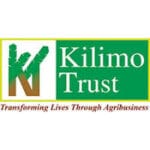AboutAgricultural Management Practices
Agricultural Management Practices is the study and application of production, economic and management principles that are used in the cultivation, transformation and marketing of food and other agricultural products. These principles are used to produce and add value to high-quality agricultural products so that these products have economic, aesthetic, social and cultural value.
The subject is designed to provide you with a sound practice- orientated base that integrates theoretical and practical competencies
Topics in the Agricultural Management Practices curriculum
- Crop Production and Crop Management
- Soil and Water Management
- Product Harvesting and Quality Control
- Animal Production and Animal Management Aspects
- Farm Management and Evaluation
- Value Adding, Processing and Producer Organisations
- Agri-tourism, Business Planning and Entrepreneurship
Overview of the topic
| topic | Content | |
| Crop Production and Crop management | Grade 10 | investigate agricultural crops with regard to the following: production practices and an overview of the economic importance of crop production;potential role in industry;main production areas in the RSA;production systems;classification of these crops according to agronomic/horticultural characteristics of their seed and plant; and main cultivars available for each crop. |
| Grade 11 | Investigate at least ONE specific agricultural crop with regard to the following: the main production areas and potential role in industry;overview of economic importance of this crop;classification of this crop with regard to agronomic/horticultural characteristics; growth curve and critical period during its growth; andmost important cultivars available for this selected crop, reasons for use. | |
| Grade 12 | None | |
| soil and Water management | Grade 10 | FOUR agricultural crops general climatic requirements (temperature, rainfall, humidity, evaporation and radiation);collection of weather data;basic soil aspects;soil cultivation methods and types of implements;irrigation; drainage (methods and types);waste management; andland care land use and water resources used for agriculture. |
| Grade 11 | One specific agricultural crop method of soil sampling and basic soil profile;basic soil characteristics and properties;soil cultivation and tillage practices (methods and aims);irrigation (methods and types);basic principles in water scheduling;climatic requirements (precipitation, temperature, evaporation, radiation and humidity); andthe use of weather information. | |
| Grade 12 | Physical farm planning | |
| topic | Content | |
| Crop management | Grade 10 | Four agricultural crops crop establishment practices: basic soil preparation practices, plant density, depth and methods (factors influencing each);weeds (types and methods of control);main diseases (methods or types and control);main pest (methods, types and control).crop rotation, monoculture and inter-cropping;keeping records (financial, physical and production records);crop protection programmes; andawareness of relevant legislation. |
| Grade 11 | One specific agricultural crop soil and plant analysis, fertilization according to soil analysis and fertilization methods and programme ;crop establishment practices;basic principles and terminology (e.g. plant density, depth, planting time, treatment of seed, methods and factors influencing each); weeds: types, identification, prevention and methods of control;diseases: types, identification, prevention and methods of control;pests: types, identification, prevention and methods of control.principles of crop rotation, monoculture and inter-cropping;calibration and setting of different farm implements;methods of crop protection;precision farming;manipulation of plant growth (pruning, trellising, green housing, etc.);record keeping (financial, physical and production records);crop protection programme; andproduction-related legislation, farmer health issues and risk management. | |
| Grade 12 | None | |
| animal Production | Grade 10 | investigate types of farm animals (e.g. cattle, sheep, pigs and chickens) with regard to the following: production practices and an overview of the economic importance of production;potential role in industry;main production areas in SA;farming systems;general classification of these farm animals; andbreeds and latest breeds available in each animal group. |
| Grade 11 | Investigate at least one specific farm animal with regard to the following: the economic importance;potential role in industry;main areas of production;Breed standards (evaluating and judging a breed), including:selection of breeding stock (progeny testing, general appearance and selection procedures);breeding systems (e.g. cross breeding and inbreeding); andbreeding aids (e.g. stud book registers and production records). | |
| Grade 12 | harvesting, grading, storage and distribution of crop (practices and principles). | |
| topic | Content | |
| animal management aspects | Grade 10 | Four types of farm animals (e.g. cattle, sheep, pigs and chickens) handling of farm animals;care of farm animals;behaviour of farm animals.housing and facilities;after-care of animals (dehorning, removal of extra teats, castration, etc.);identification methods (earmarks, tattooing, ear tags, etc.);basic concepts of feeding (classification and terminology).diseases (identification, types and methods of control);parasites: internal and external (identification, types and methods of control). keeping records (financial, physical, production and health records);management programmes; andawareness of relevant legislation. |
| Grade 11 | One specific farm animalReproduction: aspects of production unit (oestrus, mating, artificial insemination, embryo transplantation, cloning, gestation period and service register);Housing and facilities: types and functions;After-care: dehorning, castration, identification, etcDiseases: types, identification of symptoms, prevention and methods of control; Animal handling and facilities;Basic veterinary practices: diagnostic procedure, blood smear, blood sample and tissue sample;Immunology: active and non-active;Parasitology: internal and external types, identification, prevention and methods of control. Feeding aspects according to physiology status;Requirements, rations, procedures and methods;Keeping records (physical, production, financial and animal health programmes); Production-related legislation;Farmer health issues; Risk management.if a ruminant is chosen as the farm animal:objectives of veld management;grazing systems: extensive and intensive principles (selective grazing, non- selective grazing, rotational grazing, etc.);use (fodder flow planning);carrying capacity and relevant terminology; andveld composition and determining carrying capacity. | |
| Grade 12 | ||
| topic | Content | |
| management principles, Farm planning and recording | Grade 10 | Definition of management;Principles such as:planning;control;co-ordination;motivation; andcommunication. |
| Grade 11 | Objectives of veld managementGrazing systems:extensive and intensive principles (selective grazing, non-selective grazing, rotational grazing, etc.);use (fodder flow planning);carrying capacity and relevant terminology; andveld composition and determining carrying capacity. | |
| Grade 12 | soil;camps;contours;resource use;precision farming;mechanisation;economic planning (budgets, trial balance, cash flow, and income and expenses statement); labour planning;planning regarding implements;recording (aim, advantages and types of records);methods of recording (diary, database and palm computer); andrecording financial data (invoice, cheques, depreciation, deposit books and petty cash). | |
| Product harvesting and Quality control | Grade 12 | Product harvesting:regulations and legal aspects;handling products; andstoring products.Quality control measuresSorting and grading products |
| topic | Content | |
| marketing, Producer organisations, Value adding and Processing | Grade 12 | marketing of products:marketing methods and channels;marketing Acts;marketing functions; andadvertising.Role of producer organisations:types of organisations;advantages and disadvantages of organisations; andthe role of the product organisation in the marketing of products.Value adding:value-adding methods;types of products; andadvantages.Processing:principles of processing;advantages;factors indicating the viability of value.marketing and control;Labelling Acts and value adding; andRegistration Acts. |
| agro-tourism, Business planning and entrepreneurship | Grade 12 | Agro-tourism: definition and description types;advantages and disadvantages; andrequirements.The farmer’s role:Business planning:description and explanation of a business plana simple business plan; andmethods of setting prices.Entrepreneurship:definition;qualities of an entrepreneur;managing skills:different types of business;business creation in agriculture;business survival strategies; andthe occupation of niche markets. |
| topic | Content | |
| Grade 12 | Farm valuation: | |
| inter-reliance of different enterprises; | ||
| profitability of enterprises; | ||
| viability of enterprises; and | ||
| suitability of the farm in terms of the business plan. | ||
| Farm valuation and | management: | |
| planning | planning; | |
| organising; | ||
| motivation; | ||
| control; | ||
| coordination; and | ||
| evaluation. | ||
Scope of Knowledge
- management skills: the knowledge and skills required to plan, organise, guide, control and evaluate production factors to achieve sustainable production enterprises;
- entrepreneurial skills: the ability to manage risks and combine production factors creatively to produce superior goods and services;
- operational skills: involve the day-to-day management of crop and animal enterprises;
- marketing skills: those value-adding activities in the agricultural supply chain that deal with various agricultural production lines; and
- research skills: involve aspects of problem identification; setting objectives; data collection, analysis, evaluation; and report writing.
Subject requirements
Each learner should have:
- a textbook; and
- protective clothing for practical work.
Time Allocation for Agricultural Management Practices
Four hours per week are allocated to Agricultural Management Practices. A two-hour continuous period must be allocated per week for practicals. Practical classes in the afternoons can be used to finish the PAT and various practical activities as decided by the school.
Content Checklist
Below is a checklist you should use to ensure that you have covered the Grade 12 content in full.
In Grade 12 the main content topics are:
- Crop Production and Crop Management
- Soil and Water Management
- Product Harvesting and Quality Control
- Animal Production and Animal Management Aspects
- Farm Management and Evaluation
- Value Adding, Processing and Producer Organisations
- Agri-tourism, Business Planning and Entrepreneurship
Assessment
SBA: 25% 100 marks
PAT: 25% 100 marks
Final external examination (Nov) 50% 200 marks
During the year you will complete different formal assessment tasks. All assessment tasks are extremely important and you need to complete them to the best of your ability to ensure a good SBA mark.
The following formal assessment tasks are compulsory:
- PAT
- One practical task
- Two control tests
- Trial examination. This examination has exactly the same content distribution and format as the final examination.
- November examination
Duration of paper: 3 hours
Production Enterprise
Section A (shorter questions) 50 marks
Section B (3 x longer questions) (150) 3 x 50 marks
Total: 200 marks
Tips for success
- Ask your teacher for the content framework for Grade 12. This will give you the detailed content to be studied. Paste it in your exercise book. Tick off every topic as it is taught in class, and write the relevant textbook page numbers next to the topic.
- Prepare yourself to draw and interpret graphs, do calculations, read case studies or scenarios very carefully, interpret diagrams, study sketches (also the labelling) and apply your knowledge.
- Work through as many past Agricultural Management Practices papers as possible to prepare you for the examinations.
- PAT must be done accurately and neatly according to the PAT guidelines and must be finished in the prescribed time
- Assignments and practical tasks must be done according to the guidelines and handed in on time











